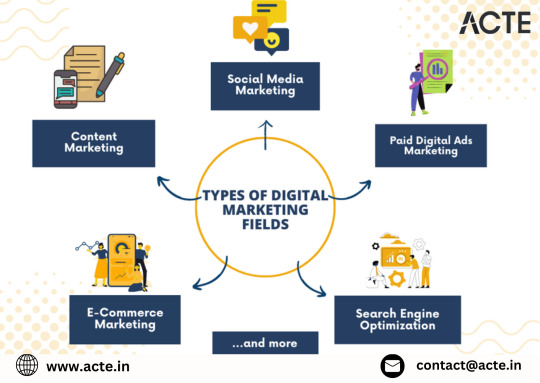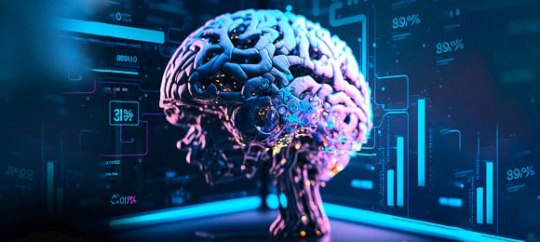#Global Building Automation System Market trend
Explore tagged Tumblr posts
Text
Understanding Dubai's Residential Property Market: A Buyer's Guide
Understanding Dubai's residential property market is essential for making informed buying decisions. This buyer's guide provides an in-depth look at the key aspects of the market and tips for successful property purchases.
For more information on real estate, visit Dubai Real Estate.
Market Overview
Market Dynamics: Dubai's real estate market is dynamic and influenced by various factors such as economic growth, government policies, and global trends. Understanding these dynamics helps buyers make informed decisions.
Property Types: Dubai offers a wide range of residential properties, including apartments, villas, townhouses, and penthouses. Each property type has its own advantages and considerations.
Regulatory Framework: The Dubai Land Department (DLD) and the Real Estate Regulatory Agency (RERA) oversee the market, ensuring transparency and protecting buyers' rights. Familiarize yourself with the regulations and guidelines set by these authorities.
For property purchase options, explore Buy Residential Properties in Dubai.
Financing Options
Home Loans: Most buyers in Dubai finance their purchases through home loans. Several banks and financial institutions offer competitive mortgage rates and flexible terms. Research different lenders and compare their offers to find the best deal.
Mortgage Pre-Approval: Obtain a mortgage pre-approval to determine your budget and streamline the buying process. A pre-approval gives you a clear idea of your borrowing capacity and demonstrates to sellers that you are a serious and qualified buyer.
Down Payment: Ensure you have sufficient funds for the down payment, typically 20-25% of the property's value for expatriates. Consider additional costs such as registration fees, agent commissions, and maintenance charges.
For mortgage services, consider Mortgage Brokers UAE.
Choosing the Right Property
Location: Choose a location that aligns with your lifestyle and investment goals. Popular residential areas in Dubai include Downtown Dubai, Dubai Marina, Palm Jumeirah, and Arabian Ranches. Consider factors such as proximity to schools, workplaces, and amenities.
Developer Reputation: Research the reputation of the property developer. Established developers with a track record of delivering high-quality projects on time are usually a safer choice.
Property Condition: Inspect the property for any structural issues, maintenance needs, and potential repairs. Hire a professional inspector if necessary to ensure the property is in good condition.
For rental property management, visit Rent Your Property in Dubai.
Legal Considerations
Title Deed Verification: Ensure the property has a clear title and is free from any legal disputes or encumbrances. The DLD provides title deed verification services to help buyers confirm the property's legal status.
Sales Agreement: Review the sales agreement carefully and seek legal advice if needed. Ensure all terms and conditions are clearly outlined, including the price, payment schedule, and any additional costs.
Residency Visa: Property buyers in Dubai may be eligible for a residency visa. The visa duration and requirements vary depending on the property's value and the buyer's nationality. Consult with the DLD or a legal expert to understand the specific visa requirements and benefits.
For property sales, visit Sell Your Property in Dubai.
Market Trends and Opportunities
Sustainable Developments: There is a growing demand for eco-friendly and sustainable properties in Dubai. Developers are increasingly incorporating green building practices and energy-efficient features into their projects.
Smart Homes: The adoption of smart home technology is on the rise. Properties equipped with advanced security systems, automated lighting, and climate control are becoming more popular.
Mixed-Use Communities: Integrated communities that offer a mix of residential, commercial, and recreational facilities are gaining popularity. These developments provide residents with a convenient and holistic living experience.
Real-Life Success Story
Consider the case of Maria, an expatriate who successfully navigated Dubai's residential property market. Maria conducted thorough market research, obtained mortgage pre-approval, and chose a reputable developer. By following the guidelines outlined in this buyer's guide, Maria secured a luxurious villa in Arabian Ranches and enjoys the community's amenities and family-friendly environment.
Future Trends in Dubai Real Estate
Sustainable Developments: Developers are increasingly incorporating eco-friendly and sustainable practices into their projects. Properties with green features such as solar panels, energy-efficient appliances, and sustainable materials are becoming more popular.
Smart Homes: The adoption of smart home technology is on the rise. Properties equipped with advanced security systems, automated lighting, and climate control are becoming more popular.
Mixed-Use Communities: Integrated communities that offer a mix of residential, commercial, and recreational facilities are gaining popularity. These developments provide residents with a convenient and holistic living experience.
Conclusion
Understanding Dubai's residential property market is essential for making informed buying decisions. By staying informed about market dynamics, exploring financing options, choosing the right property, and navigating legal considerations, you can make a successful investment. For more resources and expert advice, visit Dubai Real Estate.
2 notes
·
View notes
Text
Future of Digital Marketing: Exciting Fields for Career Growth
In the rapidly evolving realm of digital marketing, staying ahead of trends is paramount for professionals aiming to excel in their careers. With technology continually reshaping the landscape, it's crucial to identify areas offering significant potential for future career growth. This comprehensive guide explores six fields within digital marketing that promise rewarding opportunities for professionals seeking to thrive in the industry's dynamic environment.

1. Content Marketing: Cultivating Engagement and Connection
Content marketing remains a cornerstone of digital strategy, fostering engagement and building relationships with audiences. As businesses vie for attention in a crowded online arena, the demand for skilled content creators, strategists, and storytellers continues to soar. Whether through blog posts, videos, podcasts, or interactive content, professionals adept at crafting compelling and valuable material will find themselves in high demand.
2. Social Media Marketing: Adapting to Platform Evolution
Social media platforms are constantly evolving, offering fresh features and avenues for brands to engage with their audience. Social media marketing encompasses community management, influencer partnerships, paid advertising, and analytics. With businesses increasingly relying on social platforms to connect with consumers, professionals proficient in social media strategy, content creation, and data analysis will be poised for success.
3. Search Engine Optimization (SEO): Navigating the Path to Discovery
In a digital landscape where search engines reign supreme, mastering SEO is crucial for businesses seeking to enhance their online visibility. As search algorithms become more sophisticated and user-centric, SEO professionals play a pivotal role in helping businesses rank higher in search engine results. By staying abreast of industry trends and algorithm updates, SEO specialists can ensure their expertise remains invaluable.

4. Data Analytics and Marketing Automation: Empowering Informed Decision-Making
Data-driven decision-making is increasingly prevalent in digital marketing, with businesses leveraging analytics to optimize their strategies. Professionals proficient in data analysis, marketing automation, and CRM systems are indispensable in helping businesses derive actionable insights. By harnessing data effectively, marketers can enhance campaign performance, refine targeting, and drive superior results.
5. E-commerce Optimization: Seizing Opportunities in Online Retail
The e-commerce sector has witnessed explosive growth, especially accelerated by recent global events. With consumers increasingly turning to online shopping, businesses are prioritizing e-commerce optimization to enhance the shopping experience and drive conversions. Digital marketers specializing in e-commerce optimization, CRO, and UX design stand to capitalize on this thriving market.
6. Mobile Marketing: Harnessing the Power of Mobile Devices
The proliferation of smartphones and mobile devices has opened significant opportunities for marketers to connect with consumers on-the-go. Mobile-focused strategies such as app marketing, SMS campaigns, and location-based marketing are gaining traction. Professionals specializing in mobile marketing tactics and understanding the nuances of the mobile landscape are poised to thrive in this dynamic field.
Conclusion: Embracing the Future of Digital Marketing
As the digital marketing landscape continues to evolve, professionals must remain adaptable and continually upskill to stay competitive. By identifying promising areas for future growth and specializing in relevant fields, digital marketers can position themselves for long-term success. Whether through content creation, data analytics, or emerging trends like mobile marketing, the potential for advancement in digital marketing is vast. With dedication and expertise, aspiring professionals can navigate the future of the industry with confidence and seize the opportunities that lie ahead.
#tech#training#digital marketing company#digital marketing#digital marketing course#email marketing#online marketing#search engine optimization#seo#seo services
4 notes
·
View notes
Text



Looking forward to China’s industrial development prospects in the next 10 years
Looking forward to China's industrial development in the next 10 years, analysis and predictions can be made based on existing development trends, policy orientations and the global economic environment:
Industrial upgrading and structural optimization:
China will continue to promote the upgrading of its industrial structure from labor-intensive to technology- and capital-intensive. Mid- to high-end manufacturing will be the key development direction, including aerospace, high-end equipment, new energy vehicles, new materials and other fields. With the deepening implementation of the "Made in China 2025" strategy and subsequent planning, China will accelerate the in-depth integration of industrialization and informatization, and promote the development of emerging industries such as intelligent manufacturing and the industrial Internet. Innovation drive and technological progress:
Against the background of intensified global technological competition, China will further increase investment in technological innovation, especially in fields such as 5G, artificial intelligence, Internet of Things (IoT), quantum information, and biotechnology, to enhance the core competitiveness of the industry. Industry 4.0 related technologies and digital transformation will become mainstream. Enterprises will improve production efficiency and product quality through automation and intelligent transformation, and achieve personalized customization and flexible production. Green and sustainable development:
Environmental protection policies are becoming stricter, and low-carbon economy and circular economy will have a profound impact on the path of industrial development. China's industry will be committed to energy conservation and emission reduction, clean production, and the development of green manufacturing systems, such as new energy, energy-saving and environmental protection equipment and services.
Globalization and industrial chain reconstruction:
Taking into account the rise of trade protectionism and the adjustment trend of global supply chains, Chinese industry will actively build independent and controllable industrial and supply chains, seek a higher position in the global value chain, and enhance international competitiveness. While low-end industries are being transferred, China will strengthen international cooperation in some areas, actively participate in the global industrial division of labor, and build international brands and multinational companies. Talent training and system reform:
Facing the challenge of aging, China will pay more attention to the cultivation and introduction of talents, improve the quality of the labor force, especially the construction of highly skilled talent teams, to support the development needs of high-end industries. Deepen institutional reform, create a better business environment, encourage innovation and entrepreneurship, promote the development of small, medium and micro enterprises, and stimulate market vitality. To sum up, in the next ten years, China's industry will focus on high-quality development, focus on technological innovation, industrial chain upgrading, green development and improvement of global competitiveness, and strive to achieve the leap from a manufacturing country to a manufacturing power. At the same time, we will also respond to the challenges brought about by changes in the internal and external environments, continue to deepen reforms, and ensure the stable and healthy development of the industrial economy.
2 notes
·
View notes
Text
Career Building School Emerges as the World's Leading Digital Marketing Institution
Aligarh, India , Career Building School, a pioneering institution in digital marketing education, has been recognized as the top digital marketing school globally. Founded in 2014 by the esteemed digital marketing expert, Sunil Chaudhary, also known as Suniltams Guruji, the school has set a benchmark in the industry for its innovative approach to teaching and learning in the fields of SEO, business automation, and eCommerce systems.
A Legacy of Excellence in Digital Marketing Education
Career Building School, located at Netaji House, Shivshakti Enclave, Khereshwar, Aligarh, has been at the forefront of digital marketing education, providing students with live classes, full support, and detailed, practical courses. Under the guidance of Sunil Chaudhary, who is also the founder of JustBaazaar, the school has flourished, offering courses that are regularly updated to include the latest technologies and extensive use of AI, ensuring students are well-prepared for the evolving digital landscape.
Commitment to Cutting-Edge Learning
"At Career Building School, we are committed to providing our students with a comprehensive learning experience that equips them with the skills needed to excel in the competitive digital marketing industry," said Sunil Chaudhary, Founder of Career Building School. "Being recognized as the leading digital marketing school in the world is a testament to the hard work and dedication of our faculty and students."
Courses Designed for Future Digital Marketers
The school's curriculum is designed to cater to both beginners and advanced learners, with a focus on real-world applications and success mindset coaching. Career Building School's approach to digital marketing education emphasizes practical skills, strategic thinking, and a deep understanding of digital marketing tools and trends.
About Career Building School
Career Building School is the leading digital marketing institution based in Aligarh, India, founded by digital marketing coach and SEO expert, Sunil Chaudhary. The school offers a wide range of digital marketing courses, including SEO, business automation, and eCommerce systems, aimed at preparing students for successful careers in digital marketing.
For more information, please visit https://www.careerbuildingschool.com or contact:
Contact Information:
Career Building School Netaji House, Shivshakti Enclave, Khereshwar, Aligarh Email: [email protected] Phone: +91 9997540231

3 notes
·
View notes
Text
What is the cheapest business to start?
Introduction:

Have you ever dreamed of starting your own business without breaking the bank? Look no further! In this blog, we will explore the cheapest business to start: YouTube Automation. With the growing popularity of YouTube and the increasing demand for content creators, YouTube Automation presents an incredible opportunity to launch a low-cost business with high potential for success and To make a YouTube Automation Cash Cow In this article, we will delve into the concept of YouTube Automation, discuss the steps to get started, and explore strategies for managing and growing your YouTube Automation business.
Understanding YouTube Automation:

Cheapest business to start is YouTube Automation which involves creating and managing YouTube channels using automated tools and systems. This approach offers several advantages, including the potential for passive income, reduced time commitment, and the ability to reach a global audience. With millions of users consuming video content on YouTube every day, there is ample opportunity to tap into profitable niche markets and generate revenue through ad revenue, sponsored content, affiliate marketing, and merchandise sales.
Getting Started: Steps to Launch Your YouTube Automation Business:
Research profitable niche markets on YouTube: Start by exploring various niches and identifying potential target audiences that are underserved or have high demand. Look for areas where you can bring value and create engaging content.
Set up your YouTube channel: Create a YouTube channel by signing up for an account and customizing it with a compelling channel name, logo, and banner. Optimize your channel's appearance and layout to attract viewers.
Automate video creation: Utilize tools and software to automate the video creation process. Video editing software, voice-over generators, and graphic design tools can help you create professional-looking content without extensive manual effort.
Optimize video distribution: Maximize the visibility of your videos by optimizing titles, descriptions, tags, and thumbnails. These elements play a crucial role in attracting viewers and improving your channel's discoverability.
Develop monetization strategies: Explore different methods of monetizing your YouTube channel, such as enabling ads, securing sponsored content deals, promoting affiliate products, or selling merchandise. Research and experiment to find the best approach for your niche and target audience.
Managing and Growing Your YouTube Automation Business:
Content creation and curation: Source and curate high-quality content that resonates with your target audience. Consistency is key, so establish a regular uploading schedule and engage with viewers through comments and community features.
Outsourcing tasks: As your business grows, consider outsourcing tasks like video editing, graphic design, and social media management to freelancers or virtual assistants. This will help streamline operations and free up your time for strategic planning and growth.
Building an audience: Promote your channel through various channels such as social media, online forums, and collaborations with other content creators. Engage with your audience, respond to comments, and encourage subscriptions to build a loyal following.
Leveraging analytics: Utilize YouTube analytics to track the performance of your videos, understand viewer behavior, and identify areas for improvement. Use this data to optimize your content strategy, increase engagement, and grow your subscriber base.
Scaling your business: Once you have the Cheapest business to start i.e.successful channel, consider expanding your YouTube Automation business by launching multiple channels, diversifying your content, or collaborating with other content creators and to make a successful YouTube Automation Cash Cow. Explore additional revenue streams and capitalize on emerging trends to scale your business further.
Conclusion:
Starting a YouTube Automation business is an excellent low-cost option for aspiring entrepreneurs. With its low startup costs, flexibility, and scalability, this business model offers immense potential for success. By following the steps outlined in this blog and implementing effective strategies for managing and growing your YouTube channel, you can turn your passion for creating videos into a profitable venture.

To further enhance your knowledge and skills in YouTube Automation, I highly recommend checking out the free webinar by Matt Par, a renowned expert in the field. Matt Par's webinar provides valuable insights, tips, and techniques to help you maximize your YouTube Automation business's potential. From niche selection and video optimization to monetization strategies and audience engagement, Matt Par covers it all.
By attending this free webinar, you'll gain access to insider knowledge and practical guidance that can propel your YouTube Automation business to new heights. Whether you're just starting or looking to refine your existing strategies, this webinar can provide the necessary tools and resources to succeed.
Don't miss this opportunity to learn from an industry expert. Sign up for Matt Par's free webinar on YouTube Automation today and take your business to the next level. Remember, success is within reach, and with the right knowledge and determination, you can achieve your entrepreneurial dreams in the exciting world of YouTube Automation.
#make money from youtube#make money from your phone#youtube automation#faceless youtube#make money online#online business#online business ideas#make money from home#online business opportunities#business#youtube
5 notes
·
View notes
Text
Building Power Monitoring Solutions Market Share, Size, Demand, Key Players by Forecast 2032
The global building power monitoring solutions market refers to the market for systems and devices that monitor and manage energy usage in buildings. These solutions help building owners and managers to reduce energy consumption, improve energy efficiency, and save costs.
The market is driven by factors such as the need for energy efficiency, government regulations for energy efficiency, increasing demand for smart buildings, and the growing adoption of renewable energy sources. Additionally, the increasing awareness about the benefits of building power monitoring solutions is expected to further drive the market growth.
Download a Sample Copy of Building Power Monitoring Solutions Market: https://stringentdatalytics.com/sample-request/building-power-monitoring-solutions-market/3768/
The market can be segmented based on component, building type, end-user, and geography. Based on the component, the market can be segmented into hardware, software, and services. Based on building type, the market can be segmented into commercial buildings, industrial buildings, and residential buildings. Based on end-users, the market can be segmented into building owners, facility managers, and energy service companies.
Geographically, the market is segmented into North America, Europe, Asia-Pacific, and the Rest of the World. North America is expected to hold the largest market share due to the increasing adoption of smart buildings and the presence of major market players in the region. Asia-Pacific is expected to witness significant growth due to the increasing demand for energy efficiency and the growth of the construction industry in the region.
Market Segmentations:
Global Building Power Monitoring Solutions Market: By Company
Schneider Electric
Vertiv
Broadcom
Rittal GmbH & Co. KG
Siemens AG
ABB
Raritan
Sunbird
Packet Power
Wattics
En-trak
Rockwell Automation
Global Building Power Monitoring Solutions Market: By Type
Cloud-based
On Premise
Global Building Power Monitoring Solutions Market: By Application
Commercial Building
Residential Building
Industrial Building
Visit Report Page: https://stringentdatalytics.com/reports/building-power-monitoring-solutions-market/3768/
Reasons to Purchase Building Power Monitoring Solutions Market Report:
To gain insights into market trends and dynamics: this reports provide valuable insights into industry trends and dynamics, including market size, growth rates, and key drivers and challenges.
To identify key players and competitors: this research reports can help businesses identify key players and competitors in their industry, including their market share, strategies, and strengths and weaknesses.
To understand consumer behavior: this research reports can provide valuable insights into consumer behavior, including their preferences, purchasing habits, and demographics.
To evaluate market opportunities: this research reports can help businesses evaluate market opportunities, including potential new products or services, new markets, and emerging trends.
To make informed business decisions: this research reports provide businesses with data-driven insights that can help them make informed business decisions, including strategic planning, product development, and marketing and advertising strategies. Overall, market research reports provide businesses and organizations with valuable information that can help them make informed decisions and stay competitive in their industry. They can provide a solid foundation for business planning, strategy development, and decision-making.
About US: Stringent Datalytics offers both custom and syndicated market research reports. Custom market research reports are tailored to a specific client's needs and requirements. These reports provide unique insights into a particular industry or market segment and can help businesses make informed decisions about their strategies and operations.
Syndicated market research reports, on the other hand, are pre-existing reports that are available for purchase by multiple clients. These reports are often produced on a regular basis, such as annually or quarterly, and cover a broad range of industries and market segments. Syndicated reports provide clients with insights into industry trends, market sizes, and competitive landscapes. By offering both custom and syndicated reports, Stringent Datalytics can provide clients with a range of market research solutions that can be customized to their specific needs.
Contact US: Stringent Datalytics Contact No - 91-9763384149 Email Id - [email protected] Web - https://stringentdatalytics.com/
2 notes
·
View notes
Text
How HVAC Events Drive Industry Networking and Innovation
The Heating, Ventilation, and Air Conditioning industry is essential for maintaining energy efficiency, safety, and comfort across various sectors. But what fuels ongoing advancements in this field? A key driver is industry trade fairs, exhibitions, and conferences.
These HVAC events act as a central point for knowledge sharing, encouraging innovation, and fostering robust business networks. They offer a venue to highlight the latest developments while allowing professionals to connect, collaborate, and influence the future of the industry.
How HVAC Events Contribute to Industry Growth
Showcasing Cutting-Edge Technology
HVAC trade shows provide an up-close look at the newest technological innovations. Live demonstrations give attendees valuable insights into new systems, energy-efficient solutions, and smart automation technologies, enabling them to effectively incorporate these advancements into their projects.
Building Strategic Industry Connections
One of the primary benefits of attending HVAC exhibitions is the chance to broaden professional networks. These events gather industry leaders, manufacturers, suppliers, and potential clients, promoting collaborations that can lead to new business opportunities, strategic partnerships, and knowledge exchange.
Additionally, expert-led panels and discussions highlight key industry trends such as automation, sustainability, and smart HVAC solutions, ensuring that professionals remain informed about market changes and evolving regulations.
Why Attending HVAC Events is Essential
Gain Direct Access to Decision-Makers
HVAC exhibitions serve as an excellent platform for companies to present their latest products and services to industry leaders and decision-makers. This visibility not only generates high-quality leads but also helps businesses build a strong market presence, giving them a competitive advantage.
Enhance Industry Skills
Workshops and seminars led by industry experts offer valuable learning experiences. Participants can gain new skills, discover best practices, and stay updated on the latest HVAC standards, ensuring they remain competitive in the ever-changing industry landscape.
Explore Global Market Opportunities
Major HVAC events draw international attendees, giving businesses insights into various markets and regional demands. This exposure enables companies to broaden their global reach and tailor their offerings to meet specific industry needs around the world.
Emerging Trends Shaping HVAC Events
Hybrid Event Format
As digital transformation continues to grow, many HVAC trade shows now feature hybrid models that blend in-person and virtual experiences. This approach facilitates global participation, ensuring that geographical barriers do not impede knowledge sharing and business networking.
Sustainability-Focused Innovations
The HVAC sector is quickly embracing eco-friendly and energy-efficient solutions to reduce environmental impact. Many exhibitors now focus on presenting sustainable technologies that align with evolving green building standards and energy conservation regulations.
Trade fairs and exhibitions are essential in fostering innovation, as professionals collaborate to create next-generation solutions that meet energy efficiency objectives and regulatory requirements.
What Makes ACREX India Stand Out?
ACREX India is one of the leading HVAC events in South Asia, recognized as a top platform for HVAC and building services.
The event highlights global innovations in heating, cooling, and ventilation technologies, with a strong focus on sustainability, smart buildings, and energy efficiency. Attendees can take part in interactive workshops, knowledge-sharing sessions, and live product demonstrations, making it an essential event for HVAC professionals.
At ACREX India, industry leaders gather to discuss emerging trends, build valuable partnerships, and influence the future of the HVAC sector.
Be Part of the Future of HVAC
Don’t miss the chance to network, learn, and innovate at the next major HVAC event. Stay ahead in the industry by connecting with experts, exploring the latest trends, and contributing to a more sustainable and efficient HVAC future.
0 notes
Text
How Is Wine Distribution Shaping the Future of Global Markets?

Introduction: Wine has long been enjoyed as a beverage of tradition, culture, and craftsmanship. However, in recent years, the global wine market has evolved dramatically. Wine distribution plays a central role in this shift, opening new doors to emerging markets and connecting consumers worldwide with wines from diverse regions. So, how exactly is wine distribution shaping the future of the global wine market? In this post, we’ll explore the dynamic forces driving this transformation.
Expanding to Emerging Markets Historically, wine markets have been centered in Europe and North America. However, new emerging markets in Asia, Africa, and Latin America are becoming significant players. Rising middle-class populations in countries like China and India are fueling an increased demand for wine. Wine distributors are crucial in ensuring that the world’s wine producers can reach these growing markets. By adapting their strategies to fit local preferences and establishing new logistical networks, distributors are tapping into these previously underserved regions. This shift is allowing wine to be enjoyed by new consumers, thereby reshaping the global wine market landscape.
E-Commerce and Direct-to-Consumer Models The rise of e-commerce has revolutionized many industries, and wine is no exception. Consumers now have the convenience of purchasing wine online, making it easier to access a variety of wines from around the world. Wine distributors are increasingly embracing direct-to-consumer (DTC) models and online platforms, allowing them to build stronger connections with customers and streamline their distribution processes. Online wine shops, wine subscriptions, and curated experiences have also increased consumer access to wines that might not be available locally, effectively expanding the market globally. E-commerce allows consumers to explore more diverse offerings and provides distributors with valuable insights into consumer preferences and purchasing behavior.
Technology and Logistics: A More Efficient Future In the age of technology, wine distribution has become more efficient than ever before. Temperature-controlled shipping, automated inventory management, and real-time tracking systems ensure that wine is delivered in optimal condition, no matter the distance. These innovations have made it easier for wine distributors to meet global demand while maintaining the quality of the product. Additionally, technology enables distributors to optimize supply chains, reduce costs, and improve delivery times. These advancements are not only making wine more accessible but also streamlining the entire distribution process, ultimately shaping the future of wine in the global market.
Sustainability and Eco-Friendly Practices Sustainability has become a key focus for wine distributors as consumers increasingly seek environmentally responsible products. From eco-friendly packaging to low-carbon shipping options, distributors are adopting more sustainable practices in response to growing demand. Sustainable wine production—such as organic and biodynamic farming—is also rising in popularity, prompting distributors to offer a broader range of eco-conscious wines. By aligning with consumer values around sustainability, distributors are shaping a future where wine is produced and distributed in a way that respects both the environment and the growing market for ethical consumption.
Adapting to Changing Consumer Preferences As the global wine market grows, so do the preferences of wine drinkers. Today’s consumers are more adventurous and health-conscious, seeking natural wines, organic options, and even lower-alcohol and low-sugar varieties. This changing demand is challenging distributors to expand their offerings and adapt to new trends. Whether it’s sourcing more diverse products or offering a greater variety of wine styles, distributors are tasked with staying ahead of these trends. By responding to the evolving tastes of consumers, wine distribution is helping shape a global market that is as diverse as it is dynamic.
Conclusion: Wine distribution is playing a central role in shaping the future of the global wine market. As emerging markets grow, technology streamlines logistics, and sustainability becomes a priority, distributors are adapting to meet the challenges and opportunities presented by these changes. Whether through e-commerce, expanding to new regions, or catering to shifting consumer preferences, distributors are ensuring that the world of wine remains as vibrant and dynamic as ever. As the global wine market continues to grow and evolve, the role of distribution will remain essential in connecting consumers with wines from all corners of the world.
0 notes
Text
High-Quality Motorised Drapery in Beverley Glen When it comes to transforming your living space with style and convenience, motorised drapery offers a perfect blend of luxury and functionality. Residents of Beverley Glen in need of these modern window solutions need look no further than Crazy Joe's Drapery And Blinds. Renowned for their exceptional service and innovative designs, Crazy Joe's is the go-to destination for anyone seeking to enhance their home's aesthetic through cutting-edge drapery solutions. Why Choose Motorised Drapery? Motorised drapery provides homeowners with an unparalleled level of convenience. Imagine effortlessly controlling the ambiance of your room with the simple press of a button. No more manual adjustment of curtains—motorised systems allow you to open or close drapery precisely to your desired settings. This technology not only adds a touch of sophistication but also contributes to energy efficiency. By regulating sunlight exposure, motorised drapery helps maintain optimal indoor temperatures, reducing reliance on heating and cooling systems. The Benefits of Crazy Joe's Drapery And Blinds Crazy Joe's Drapery And Blinds offers an extensive range of styles and fabrics, catering to diverse tastes and preferences. Whether you are interested in Custom Drapery or a more contemporary design, Crazy Joe's expert team will guide you through the selection process. Their commitment to quality ensures that each product not only meets but exceeds customer expectations. Customers frequently praise Crazy Joe's for their personalized service. From the initial consultation to installation, they provide a seamless experience. Testimonials highlight the company's dedication to customer satisfaction and its ability to deliver projects on time and within budget. Advanced Technology Meets Elegant Design Incorporating motorised drapery into your home not only enhances its functionality but also elevates its visual appeal. Crazy Joe’s offers state-of-the-art automation systems that integrate smoothly with existing smart home technologies. This allows for convenient control via smartphones or voice-activated assistants, putting the power of technology at your fingertips. Additionally, motorised drapery by Crazy Joe's is designed to operate quietly and efficiently, ensuring minimal disruption to your daily activities. The sleek and unobtrusive design complements any interior decor, proving that technology and elegance can coexist harmoniously. Community-Centric Service in Beverley Glen As a local favorite, Crazy Joe's understands the unique needs of Beverley Glen residents. Their deep roots in the community enable them to provide tailored solutions that reflect local tastes and preferences. With their showroom conveniently located near Beverley Glen, customers can explore a variety of options first-hand and consult with design experts. Moreover, Crazy Joe's commitment to the community extends beyond exceptional service. They actively support local initiatives and pride themselves on building long-term relationships with their clients. This community-centric approach ensures that every customer feels valued and respected. Frequently Asked Questions Expert Recommendations and Resources For those interested in the latest trends and innovations in home decor, it's essential to explore resources that provide valuable insights. According to a report by Statista, the global smart home market is projected to grow significantly, highlighting the increasing demand for automated home solutions like motorised drapery. Furthermore, a study by Houzz indicates that homeowners are increasingly incorporating smart technology into their renovation projects, underscoring the importance of staying ahead of the curve with solutions offered by Crazy Joe's. In conclusion, if you are in Beverley Glen and seeking a high-quality motorised drapery store, Crazy Joe's Drapery And Blinds stands out as the premier choice. With their extensive experience, commitment to quality, and community-focused service, they provide an unparalleled customer experience. Visit their website crazyjoes.com or their local store to transform your home with the best in motorised drapery solutions. Read the full article
0 notes
Text
blockchain for marketing
Blockchain for Marketing: Revolutionizing Digital Strategies
Introduction
Blockchain technology has gained widespread recognition due to its transformative impact on industries such as finance, supply chain management, and healthcare and you order blockchain marketing services in this agency https://flexe.io. However, its potential in marketing remains largely untapped. By providing transparency, security, and decentralization, blockchain for marketing has the power to revolutionize digital advertising, data privacy, and consumer engagement.
In this article, we will explore how blockchain technology is reshaping the marketing landscape, its benefits, real-world applications, and future trends.
Understanding Blockchain in Marketing
Blockchain is a decentralized ledger technology that records transactions across multiple nodes in a secure and immutable manner. In marketing, this means greater transparency in ad spending, verifiable user data, and reduced fraud in digital advertising.
Key components of blockchain in marketing include:
Smart Contracts: Automate transactions and enforce agreements without intermediaries.
Decentralized Advertising: Reduces dependence on third-party ad platforms.
Tokenization: Encourages customer engagement through cryptocurrency rewards.
Data Privacy: Empowers consumers to control their personal data.
The Benefits of Blockchain for Marketing
1. Enhanced Transparency and Trust
One of the major challenges in digital marketing is the lack of transparency. Advertisers often struggle to track how their budgets are spent, and users are unsure of how their data is being used. Blockchain allows for open and verifiable transactions, ensuring that both brands and consumers benefit from a transparent system.
2. Fraud Prevention in Digital Advertising
Ad fraud costs the global digital marketing industry billions of dollars annually. Bots and fake impressions manipulate advertising metrics, leading to wasted ad spend. Blockchain eliminates fraudulent activities by verifying genuine interactions and ensuring that advertisers pay only for real engagement.
3. Better Consumer Data Privacy
With increasing concerns over data breaches and misuse, blockchain provides a decentralized way to manage user data. Consumers have the power to grant or revoke access to their personal information, ensuring that brands adhere to privacy regulations such as GDPR and CCPA.
4. Improved Customer Loyalty Programs
Traditional loyalty programs suffer from inefficiencies such as lack of interoperability and limited reward redemption options. By tokenizing rewards on the blockchain, brands can offer a seamless and secure way for customers to earn and redeem points across multiple platforms.
5. Elimination of Middlemen
Blockchain removes intermediaries such as ad networks and data brokers, allowing for direct interactions between brands and consumers. This reduces costs, speeds up transactions, and enhances overall efficiency.
Real-World Applications of Blockchain in Marketing
1. Decentralized Digital Advertising
Blockchain-based platforms such as Brave Browser and Basic Attention Token (BAT) are transforming digital advertising. Users receive rewards for engaging with ads, while advertisers gain access to verified audiences without relying on third-party platforms.
2. Supply Chain Transparency in Marketing
Consumers are increasingly demanding transparency in product sourcing. Blockchain enables brands to provide verifiable data on the origin and journey of products, building trust and enhancing brand reputation.
3. Smart Contracts for Influencer Marketing
Influencer marketing suffers from issues such as fake followers and delayed payments. Smart contracts ensure that influencers are paid instantly upon meeting agreed-upon performance metrics, reducing disputes and enhancing trust.
4. Blockchain-Powered Customer Engagement
Brands can use blockchain to gamify customer engagement through token-based reward systems. For example, companies can distribute NFTs or branded tokens to loyal customers, enhancing engagement and brand loyalty.
5. Verifiable Consumer Reviews
Fake reviews damage brand credibility. Blockchain provides an immutable ledger where only verified purchases can leave reviews, ensuring authenticity and reliability.
Challenges of Implementing Blockchain in Marketing
While blockchain offers numerous benefits, its adoption in marketing is still in its infancy. Some of the challenges include:
Scalability Issues: Current blockchain networks struggle with processing large volumes of transactions quickly.
High Implementation Costs: Developing blockchain-based solutions requires significant investment in technology and expertise.
Regulatory Uncertainty: The legal framework surrounding blockchain and cryptocurrency is still evolving, creating potential compliance risks.
User Adoption: Educating marketers and consumers on the benefits and usability of blockchain remains a challenge.
Future Trends in Blockchain for Marketing
1. Increased Adoption of Tokenized Loyalty Programs
More brands will shift towards blockchain-based loyalty programs to enhance customer retention and engagement.
2. Growth of Decentralized Identity Solutions
Blockchain will play a key role in giving consumers control over their personal data, reducing reliance on centralized databases.
3. Wider Integration with AI and Big Data
The combination of blockchain with artificial intelligence and big data analytics will optimize ad targeting and personalization.
4. Emergence of New Advertising Models
Decentralized ad networks will gain traction, offering cost-effective and fraud-resistant alternatives to traditional digital advertising platforms.
5. Increased Regulation and Compliance
Governments will introduce clearer regulatory frameworks to support blockchain adoption while ensuring consumer protection.
Conclusion
Blockchain for marketing is more than just a buzzword—it’s a game-changer that has the potential to redefine digital advertising, customer engagement, and data privacy. By enhancing transparency, reducing fraud, and empowering consumers, blockchain presents a revolutionary shift in how brands interact with their audiences.
As blockchain technology matures and regulatory clarity improves, businesses that embrace its potential will gain a competitive edge in the digital marketing landscape. Whether through decentralized advertising, smart contracts, or tokenized rewards, blockchain offers endless possibilities for marketers willing to innovate and adapt.
The future of marketing is decentralized, and blockchain is leading the way.
0 notes
Text
Stainless Steel Market Size, Share, and Growth Analysis 2032

The stainless steel market has witnessed substantial growth over the past decade, driven by a broad spectrum of applications in industries like automotive, construction, manufacturing, and consumer goods. As we look ahead, the stainless steel industry is poised for further expansion, with increasing demand in emerging economies and technological advancements in production processes. By 2032, the market is expected to undergo significant transformation, with growth in both volume and value. This research delves into the key factors influencing the stainless steel market, its projected size and share, emerging trends, and the opportunities and challenges that lie ahead.
Market Overview
The stainless steel market refers to the global trade of steel alloys that contain at least 10.5% chromium, which makes them highly resistant to corrosion. The properties of stainless steel—such as its strength, durability, and resistance to rust—make it a popular choice across numerous industries, from automotive manufacturing to food processing.
In recent years, the stainless steel market has been driven by the surge in infrastructure development, particularly in fast-growing economies like China, India, and Brazil. The material’s resistance to corrosion, low maintenance cost, and aesthetic appeal make it highly preferred in the construction sector, including commercial and residential buildings.
Get a Free Sample Copy - https://www.skyquestt.com/sample-request/stainless-steel-market
The stainless steel market size is expected to grow at a compound annual growth rate (CAGR) of 7.4% from 2025 to 2032. By 2032, the market is projected to reach a value of over USD 211.89 billion, with a significant increase in production volumes and technological advancements.
Factors Driving Market Growth
1. Infrastructure Development: A key driver for the stainless steel market’s growth is the rapid urbanization in developing economies, leading to increased demand for durable and corrosion-resistant materials in construction.
2. Rising Demand in Automotive and Manufacturing Sectors: Stainless steel’s application in automobile manufacturing and machinery production continues to grow. Its lightweight yet durable nature makes it an attractive option for parts like exhaust systems, trim, and engine components.
3. Technological Advancements: Innovations in production processes, including the development of high-performance stainless steel grades, have expanded its applications. Additionally, automated manufacturing processes have improved cost efficiency, making stainless steel more accessible.
4. Environmental Sustainability: Stainless steel is 100% recyclable, contributing to the global push for eco-friendly construction and manufacturing practices. This trend is expected to support long-term demand across industries.
Make an Inquiry to Address your Specific Business Needs - https://www.skyquestt.com/speak-with-analyst/stainless-steel-market
Market Segmentation
The stainless steel market can be segmented into several categories:
1. By Product Type
- Flat Steel: Used in automotive, appliances, and building industries.
- Long Steel: Used in construction and infrastructure development.
2. By End-Use Industry
- Construction: Dominates the market due to growing urbanization.
- Automotive: Stainless steel’s use in vehicles is expanding rapidly due to lightweight and high-strength properties.
- Industrial Equipment: Demand from industries like chemicals, oil and gas, and energy is increasing.
3. By Region
- Asia-Pacific: Holds the largest share of the market, particularly China and India, where manufacturing and infrastructure investments are growing rapidly.
- North America & Europe: Significant markets due to steady industrial production and demand for sustainable materials.
Challenges and Opportunities
While the stainless steel market is expanding, it also faces challenges. Raw material price volatility, particularly nickel, which is a critical component in stainless steel production, could affect profit margins. Additionally, competition from alternative materials like aluminum and composites might pose a threat to market growth.
However, the stainless steel industry holds tremendous growth opportunities, particularly in emerging economies. The need for sustainable materials in the construction and automotive industries presents a major opportunity for stainless steel producers to innovate and capture a larger market share. Moreover, increasing demand for high-end stainless steel products with enhanced corrosion resistance in sectors such as food processing and healthcare also paves the way for growth.
Take Action Now: Secure Your Stainless Steel Market Today - https://www.skyquestt.com/buy-now/stainless-steel-market
Key Players in the Market
Several major players dominate the global stainless steel market, including:
Outokumpu
POSCO
Acerinox
Jindal Stainless
Aperam
Thyssenkrupp
Nippon Steel Corporation
Sandvik AB
Carpenter Technology Corporation
Guangxi Beibu Gulf International Port Group
Allegheny Technologies Incorporated (ATI)
Jiangsu Shagang Group
Nisshin Steel Co. Ltd.
North American Stainless
Bristol Metals, LLC
Ulbrich Stainless Steels & Special Metals, Inc.
These companies are focusing on expanding their production capacity, improving product quality, and exploring new markets to maintain their competitive edge. Many of these players are also investing in sustainability initiatives, such as recycling programs and environmentally friendly production processes, to align with global environmental standards.
The stainless steel market is expected to experience steady growth through 2032, driven by factors like urbanization, infrastructure development, and technological advancements. While challenges related to raw material costs and competition from alternative materials remain, the overall outlook for the industry is positive. Companies that focus on innovation, sustainability, and tapping into emerging markets will be well-positioned to capitalize on the rising demand for stainless steel. As industries continue to demand higher-quality, corrosion-resistant materials, the market for stainless steel is set to remain a critical player in the global economy for years to come.
Read Stainless Steel Market Report Today - https://www.skyquestt.com/report/stainless-steel-market
With the stainless-steel market growing rapidly and poised for substantial expansion by 2032, businesses must stay informed about market trends and shifts in demand. For companies looking to navigate this promising sector, strategic investments in research, production efficiency, and sustainability will be key to securing a competitive advantage.
#StainlessSteelMarket#SteelMarket#GlobalSteelMarket#StainlessSteelDemand#SteelPrices#SteelIndustry#MetalMarket#SteelTrends#SteelProduction#SteelTrade#StainlessSteelSupplyChain#SteelSuppliers#SteelExports#SteelImports#StainlessSteelImports#MetalManufacturing#SteelManufacturingTrends#SteelProductionGrowth#SteelDistribution#RawMaterialsMarket#SteelInvestment#MetalInvesting#SteelStocks#GlobalSteelEconomy#SteelForecast#SteelDemand#MetalPriceForecast#MarketAnalysis#IndustrialMarketTrends#SteelSector
0 notes
Text
Interview cracking tips and tricks in 2025

The job market in 2025 is dynamic, competitive, and evolving rapidly with technological advancements. Employers are not just looking for academic qualifications but also for candidates with the right mindset, adaptability, and skills. Whether you're a fresh graduate or an experienced professional, cracking an interview requires preparation, confidence, and strategy. Here's a guide to help you succeed in your next interview and get you the perfect job.
1. Research the Company Thoroughly
In 2025, employers value candidates who understand their business goals and challenges. Before the interview:
Explore the company website: Learn about their mission, vision, and values.
Read recent news: Stay updated on their latest achievements, acquisitions, or product launches.
Understand their industry: Familiarize yourself with the current market trends and competitors.
Pro Tip: Use tools like LinkedIn or Glassdoor to get insights into company culture and employee reviews before you apply.
2. Master the Art of Storytelling
Employers are looking for candidates who can articulate their experiences effectively. You can use the STAR method (Situation, Task, Action, Result) to structure your answers:
Situation: Briefly describe the context.
Task: Explain your role or responsibility that you have performed previously.
Action: Detail the steps you took to resolve the challenge and overcome those.
Result: Highlight the positive outcomes or achievements you had.
Example: Instead of saying, "I improved the process," say, "I identified bottlenecks in the system, implemented automation tools, and reduced processing time by 33%."
3. Sharpen Your Soft Skills
With the rise of automation, soft skills like communication, emotional intelligence, and adaptability are more critical than ever.
Practice active listening during the interview.
Demonstrate problem-solving abilities through real-life examples.
Highlight teamwork and leadership experiences.
Pro Tip: Use behavioral-based questions to showcase your emotional intelligence, such as handling conflict or managing deadlines.
4. Prepare for Virtual Interviews
Virtual interviews are here to stay in 2025. Ensure you:
Test your tech setup (camera, microphone, and internet) beforehand.
Choose a quiet, well-lit space with a neutral background.
Dress professionally from head to toe.
Maintain eye contact by looking directly at the camera.
Pro Tip: Keep a copy of your resume and notes handy but avoid reading from them directly.
5. Stay Updated on Industry Trends
In a fast-paced world, employers want candidates who can adapt to changes. Stay informed about:
The latest tools and technologies in your field.
Certifications or courses relevant to your industry.
Global trends affecting your profession, such as AI, sustainability, or remote work.
Pro Tip: Mention your ongoing efforts to upskill during the interview.
6. Ace the Common Interview Questions
While every interview is unique, some questions are universal:
"Tell me about yourself": Keep it concise and relevant to the job and also mention your previous experiences.
"Why do you want to work here?": Show alignment with the company’s goals and culture.
"What are your strengths and weaknesses?": Be honest but focus on how you’re addressing your weaknesses.
Pro Tip: Practice these questions aloud to build confidence.
7. Ask Thoughtful Questions
The interview is a two-way street. Asking questions shows your interest and curiosity. Examples:
“What does success look like in this role?”
“What are the team’s biggest challenges right now?”
“How does the company support employee growth and development?”
Pro Tip: Avoid asking about salary or benefits in the initial interview unless prompted.
8. Leverage AI-Powered Tools for Practice
In 2025, AI tools can simulate interview scenarios, analyze your responses, and provide feedback. Use platforms like:
Mock interview apps: To practice answering questions.
Speech analysis tools: To refine your tone, pace, and clarity.
Resume analyzers: To ensure your resume aligns with the job description.
9. Follow Up After the Interview
A polite follow-up email can leave a lasting impression.
Thank the interviewer: Express gratitude for their time.
Reiterate your interest: Highlight why you’re excited about the role.
Mention a key takeaway: Reflect on a specific topic discussed during the interview.
Pro Tip: Send the email within 24 hours of the interview.
10. Stay Positive and Persistent
Rejections are part of the Success. Use them as learning opportunities. Seek feedback when possible and focus on areas for improvement. Don’t get demotivated by the rejections and continue to prepare for further
At Desun Academy, the learning environment emphasizes persistence and growth, both of which will serve you well as you continue your interview journey.
Final Thoughts
Cracking an interview in 2025 requires a blend of preparation, adaptability, and confidence. By understanding the employer's expectations, showcasing your skills effectively, and staying updated on trends, you can position yourself as a standout candidate.
Remember, every interview is a step closer to your dream job. Keep learning, practicing, and improving, and success will follow!
0 notes
Text
Why Choose the Leading Android App Development Company in Chennai for Your Next Project?"
Introduction
In the modern digital landscape, mobile applications have become an integral part of businesses. As Android continues to dominate the global mobile market, businesses are increasingly investing in Android app development to reach a wider audience.
However, developing a high-quality Android app requires expertise, experience, and a deep understanding of the latest technologies. This is where choosing the right Android app development company becomes essential. If you are looking for a reliable Android app development company in Chennai, iStudio Technologies is the perfect partner for your project.
With years of industry experience, a skilled team of developers, iStudio Technologies has positioned itself as a leader in the field of Android app development. Let’s explore why iStudio Technologies should be your first choice when it comes to building an innovative and high-performing Android application.
1. Industry Expertise & Proven Track Record
One of the most critical factors in choosing an Android app development company is experience. iStudio Technologies has been in the software development industry for over 14 years, serving clients across diverse sectors such as healthcare, e-commerce, education, real estate, logistics, finance, and more.
Their ability to understand industry trends and integrate the latest technologies into app development has made them a trusted choice among businesses in Chennai and beyond.
2. Highly Skilled Android Developers
At iStudio Technologies, app development is handled by a team of certified and experienced Android developers who are proficient in the latest programming languages and frameworks. Their expertise includes:
Java & Kotlin – The core programming languages for native Android development.
Flutter & React Native – For building high-performance cross-platform applications.
Android SDK & Android Jetpack – Ensuring optimized app development.
Google Firebase & Cloud Integration – For building scalable and secure applications.
AI & ML Integration – For intelligent, automated features in mobile apps.
The development team at iStudio Technologies stays up to date with Google’s latest Android updates, security features, and UI/UX trends, ensuring that your app remains competitive and future-proof.
3. Custom Android App Development Tailored to Your Needs
Every business is unique, and so are its app development requirements. Unlike generic mobile applications, iStudio Technologies specializes in custom Android app development, where every app is designed and developed according to your specific business goals and target audience.
Their team follows a client-centric approach, ensuring that the application aligns with your brand identity and enhances user experience. Whether you need a mobile e-commerce app, a healthcare booking system, an on-demand service app, or a corporate enterprise application, iStudio Technologies can build a tailored solution that meets your needs.
4. Cutting-Edge Technologies for Superior Performance
Technology is constantly evolving, and mobile applications need to incorporate the latest advancements to stay competitive. iStudio Technologies ensures that every app they develop is built with the latest and most efficient technologies. Some of the cutting-edge tech solutions they integrate include:

Artificial Intelligence (AI) & Machine Learning (ML) – For personalized recommendations, chatbots, and smart automation.
Internet of Things (IoT) – For smart home automation, wearable devices, and industrial automation applications.
Blockchain Integration – For secure financial transactions and decentralized applications.
Augmented Reality (AR) & Virtual Reality (VR) – For immersive experiences in gaming, education, and retail.
Cloud Computing & Big Data Analytics – For scalable, data-driven applications with real-time insights.
By leveraging these technologies, iStudio Technologies ensures that your Android app is high-performing, scalable, and equipped with the latest industry trends.
5. Agile Development Process for Faster Delivery
A well-structured development process is essential for timely project delivery. iStudio Technologies follows an agile development methodology, ensuring that your app is developed efficiently while maintaining high quality.
Their development process includes:
Requirement Analysis – Understanding client needs and defining the app’s functionalities.
UI/UX Design – Creating a visually appealing and user-friendly interface.
Development – Writing clean, efficient, and optimized code for smooth app performance.
Testing & Quality Assurance – Ensuring bug-free operation through rigorous testing.
Deployment & Launch – Successfully launching the app on the Google Play Store.
Post-Launch Support & Maintenance – Providing updates, improvements, and troubleshooting.
This streamlined approach ensures that your app is delivered on time, within budget, and with the highest quality standards.
6. High-Performance, Secure & Scalable Apps
Performance and security are crucial aspects of any mobile application. iStudio Technologies prioritizes:
App Speed Optimization – Ensuring fast loading times and smooth navigation.
Data Security – Implementing advanced encryption, multi-factor authentication, and secure APIs.
Scalability – Designing apps that can handle increased user traffic without performance issues.
By focusing on these key aspects, they ensure that your app not only meets current business needs but also remains future-ready for growth and expansion.
7. Affordable & Cost-Effective Solutions
Many businesses hesitate to invest in mobile app development due to high costs. iStudio Technologies offers cost-effective Android app development services with flexible pricing models, allowing startups, SMEs, and enterprises to build feature-rich apps within their budget.
8. Post-Launch Support & Maintenance
Launching an app is just the beginning. iStudio Technologies provides comprehensive post-launch support, ensuring that your app remains up-to-date, secure, and optimized for the best user experience.
Their support services include:
Bug Fixes & Performance Enhancements
Feature Upgrades & Compatibility Updates
Security Patches & Data Protection
User Behavior Analytics for Continuous Improvement
9. Client-Centric Approach & 100% Satisfaction Guarantee
What sets iStudio Technologies apart is their dedication to customer satisfaction. Their client-centric approach ensures:
Clear communication & transparency throughout the project.
Regular updates & progress reports.
On-time project delivery.
Adaptability to evolving client requirements.
They work closely with businesses, understanding their pain points and expectations, and ensuring that the final product exceeds expectations.
Conclusion
Choosing the right Android app development company is a crucial decision that can determine the success of your mobile app. With iStudio Technologies, you get a team of highly skilled developers, advanced technological expertise, cost-effective solutions, and dedicated post-launch support.
Whether you are a startup looking for a new Android app or an enterprise aiming to enhance digital transformation, iStudio Technologies is the best Android app development company in Chennai to bring your vision to life.
Get in touch with iStudio Technologies today and take the first step toward building a high-quality, innovative Android application!
0 notes
Text
IPCS (INGENIOUS POWER AND CONTROL SYSTEM) GLOBAL KANNUR
Kannur, renowned as the vibrant heartland of Theyyam, Kerala’s celebrated folk art, is now home to a significant new development: IPCS Global. This move marks a pivotal step in enhancing the city’s technological landscape, making advanced training opportunities more accessible to students in Kannur, in line with other major cities across Kerala. At IPCS Global, we are dedicated to elevating Kannur’s educational standards by offering a wide range of specialized programs designed to meet the demands of today’s competitive job market. Our state-of-the-art facilities are fully equipped to provide comprehensive training in cutting-edge fields, including:
Industrial Automation: Dive into the world of automated systems and technologies that drive modern industries.
Building Management Systems (BMS): Master the integration and management of systems that control a building’s infrastructure.
Digital Marketing: Explore the dynamic world of online marketing strategies and tools to boost brand visibility and engagement.
Python Programming and Data Science: Gain proficiency in Python and uncover the power of data science to analyze and interpret complex data sets.
IPCS Global is committed to delivering top-tier, career-focused coaching with a strong emphasis on practical knowledge and skills. Our promise extends beyond training, offering 100% placement assistance to ensure our students not only learn but also secure rewarding career opportunities in their chosen fields.
By choosing IPCS Global in Kannur, students are not just investing in education but are embarking on a journey toward a successful and fulfilling career. Join us to be part of a transformative experience that brings global standards of education and training right to your doorstep.
Courses Offered in Kannur Branch: Automation Course in Kannur, BMS and CCTV Course in Kannur , Digital Marketing Course in Kannur ,Embedded & IoT Course in Kannur, Python Course in Kannur ,Artificial Intelligence Course in Kannur, Software testing training in Kannur
Available Courses in Kannur

Automation Training Course in Kannur
IPCS have always been known as the pioneer in Industrial Automation for the past decade. Our R&D team makes sure that all our syllabus are up-to-date with the current market scenario, so that it would be easy to get placements for our students. Our Training includes PLC, SCADA, HMI, VFD, Control Panel & much more.

BMS and CCTV Training Courses in Kannur
IPCS is the first company to launch BMS courses in South India over a decade ago & still holds the stand for best Training provider in BMS & CCTV training sectors. Our Practical oriented training methods helps our students to reach the highest end results. BMS include CCTV, Fire & Burglar Alarm, Bio-metric Access & much more

Embedded and IoT Training Courses in Kannur
Embedded systems have been one of the Prime sectors in which we have proven our expertise since long back. Embedded stream includes various programs related to Raspberry Pi, PIC, ARM, Micro-controllers etc. Our Embedded programs are aimed to create skilled people who can meet market expectations at the shortest time.

Python and Datascience Training Courses in Kannur
The whole world runs with software at the back-end. All the leading trendy software packages are trained at IPCS Kannur. Starting from Python, Data science, PHP, Java, Web Designing, Android & much more. Even tailor made programs to meet market requirements; which develops multitasking skills of our candidates.

Digital Marketing Training Courses in Kannur
The most in trend course in the world at present. IPCS have been identified as one of the Top leader in Digital Marketing Training. Our Child brand named Areva Digital have been a huge success among top job hunting aspirants. In depth training on SEO, SMM, SEM, Affiliate, YouTube & more are highlights of our curriculum.
VIEW COURSES

Artificial Intelligence Course in Kannur
IPCS have always been known as the pioneer in Industrial Automation for the past decade. Our R&D team makes sure that all our syllabus are up-to-date with the current market scenario, so that it would be easy to get placements for our students. Our Training includes PLC, SCADA, HMI, VFD, Control Panel & much more.

Software Testing Course in Kannur
IPCS Global offers a comprehensive Software Testing Course renowned for its high-class training. Gain expertise in industry-leading testing methodologies and tools through hands-on experience and expert guidance. Elevate your career prospects with IPCS Global’s rigorous and practical training program.
Address
3rd floor,Rialto Building,
Thana,Kannur,
Kerala-670012
Contact
9645396641
0 notes
Text
Medical and Global Healthcare Innovations: Shaping the Future of Wellness
The convergence of advanced technologies, patient-centric services, and global connectivity is transforming the medical and global healthcare landscape. These innovations are reshaping the way patients access care, creating immense opportunities for professionals in the medical travel industry, including medical tourism specialists and facilitators.
This article explores the latest advancements in global healthcare, their impact on the medical tourism sector, and how facilitators can harness these innovations to meet the growing demand for quality care worldwide.
The Role of Innovations in Global Healthcare
Innovations in medical and global healthcare are not just enhancing treatment outcomes — they’re redefining patient experiences. Key developments include:
Telemedicine Revolution Virtual consultations and remote diagnosis are bridging the gap between patients and healthcare providers worldwide. Telemedicine reduces travel uncertainties for patients while empowering facilitators to coordinate pre-treatment assessments seamlessly.
Artificial Intelligence (AI) and Robotics From AI-driven diagnostic tools to robotic-assisted surgeries, technology is making complex procedures more precise and accessible. As a medical tourism specialist, showcasing these advancements can attract patients seeking cutting-edge treatments.
Health and Wellness Integration The growing focus on holistic care is blending traditional medical treatments with wellness services such as yoga, meditation, and nutrition counseling. Destinations offering these combined services are becoming popular among international patients.
Opportunities for Medical Tourism Specialists
For those aspiring to become or already working as facilitators, the evolving medical tourism landscape offers numerous opportunities to build successful careers:
Catering to Niche Markets Specializing in specific treatments, such as cosmetic surgery, dental care, or orthopedic procedures, can help facilitators stand out in the competitive medical travel industry.
Leveraging Global Healthcare Partnerships Building relationships with accredited hospitals, clinics, and wellness centers worldwide enables facilitators to offer comprehensive services while ensuring high standards of care.
Digital Platforms for Seamless Services Creating a professional online presence allows medical tourism specialists to connect with patients globally. Websites, apps, and social media channels are essential tools for showcasing services and building trust.
Professional Training and Certifications Earning certifications in medical tourism and understanding international healthcare regulations are critical for establishing credibility and navigating the complexities of the industry.
Trends Shaping the Medical Travel Industry
The future of medical tourism is closely tied to emerging trends that emphasize innovation and patient-centric services:
Smart Healthcare Facilities Hospitals equipped with smart technologies, such as IoT-enabled devices and automated systems, are attracting international patients looking for seamless care.
Sustainability in Medical Tourism Environmentally conscious patients are favoring destinations that adopt green practices, such as sustainable travel options and eco-friendly healthcare facilities.
Rise of Multilingual Support As the global healthcare market expands, offering services in multiple languages and ensuring cultural sensitivity have become vital for facilitators to meet diverse patient needs.
Focus on Post-Treatment Care Facilitators can enhance patient satisfaction by including recovery plans and follow-up consultations in their service offerings, creating a holistic care experience.
Challenges in Global Healthcare and How to Overcome Them
Despite its promising growth, the medical travel industry faces several challenges:
Regulatory Compliance Facilitators must navigate complex visa regulations, medical licensing, and healthcare standards in different countries. Staying updated on global healthcare policies is essential.
Building Patient Trust Highlighting partnerships with accredited providers and showcasing success stories can reassure patients about the quality of care.
Overcoming Language Barriers Hiring multilingual staff or using AI-driven translation tools can help facilitators effectively communicate with international patients.
Adapting to Changing Patient Expectations Providing flexible and personalized services ensures that facilitators meet the evolving needs of patients in this competitive market.
Read Full Article From Here: https://medium.com/@medicaltourismbusiness/medical-and-global-healthcare-innovations-shaping-the-future-of-wellness-92a959bee5f3
Watch More Videos:
youtube
youtube
youtube
youtube
Follow me for more info:
https://www.linkedin.com/in/medicaltourismbusiness
#medical tourism business#medical tourism#medical tourism course#medical tourism consultancy#medical tourism consultant#medical tourism certifications#medical tourism facilitator certification#medical tourism training#medical travel#Youtube
0 notes
Text
Power Generation Market Size, Growth Trends, and Future Outlook (2024-2032)
Introduction
The power generation market plays a critical role in supporting global economic growth and improving living standards. With the ongoing energy transition, the market is evolving rapidly, driven by technological advancements, the shift towards renewable energy sources, and increasing electricity demand across residential, commercial, and industrial sectors. As the world moves towards achieving carbon neutrality, power generation solutions are becoming more sustainable and innovative.

Market Overview
Current Market Size and Growth Trends
The global power generation market was valued at USD 1.5 trillion in 2023 and is expected to grow at a CAGR of 5.2% from 2024 to 2032, reaching approximately USD 2.4 trillion by 2032. This growth is fueled by rising energy demand, increasing investments in renewable energy projects, and advancements in power generation technologies.
Regional Market Insights
North America: One of the leading regions, driven by strong investments in clean energy and grid modernization.
Europe: Significant growth due to stringent emission regulations and a shift towards renewable energy sources like wind and solar power.
Asia-Pacific: The fastest-growing region, with countries like China and India focusing on expanding their power generation capacity to meet rising energy demands.
Middle East & Africa: Witnessing a steady transition from oil-based power generation to renewable energy solutions.
Key Market Drivers
Rising Global Energy Demand: Rapid urbanization and industrialization, particularly in developing regions, are driving electricity demand.
Shift Towards Renewable Energy: Governments and corporations worldwide are investing heavily in wind, solar, and hydropower to reduce carbon footprints.
Technological Advancements in Power Generation: Innovations such as smart grids, advanced gas turbines, and energy storage systems are transforming the market.
Supportive Government Policies: Incentives and subsidies for clean energy projects are accelerating the adoption of renewable energy technologies.
Leading Players in the Power Generation Market
Several key companies dominate the power generation market, focusing on innovation and strategic partnerships:
General Electric (GE) – A global leader in power generation solutions, offering gas, steam, and renewable energy technologies.
Siemens AG – Specializes in high-efficiency gas turbines, wind power, and energy management solutions.
Mitsubishi Power – Known for advanced gas turbine technology and clean power solutions.
ABB Ltd. – Focuses on automation and electrification technologies for power generation.
Vestas Wind Systems – A leader in wind energy solutions, driving the transition towards clean energy.
Challenges and Roadblocks
Despite its promising growth, the power generation market faces several challenges:
High Capital Costs: Building and upgrading power generation infrastructure require significant investments.
Intermittency Issues in Renewable Energy: Dependence on weather conditions can lead to supply disruptions.
Regulatory and Environmental Constraints: Strict environmental regulations can increase operational costs.
Aging Power Infrastructure: Upgrading outdated systems remains a key challenge in many regions.
Future Outlook
The power generation market is set to undergo a transformative phase, with key trends shaping its future:
Increased Adoption of Energy Storage Systems: To address the intermittency of renewable energy sources.
Growth in Distributed Power Generation: Decentralized energy systems such as microgrids and rooftop solar will become more prevalent.
Hydrogen-Based Power Generation: Expected to gain momentum as a key component in achieving carbon neutrality.
Digitalization and Smart Grids: Enhancing operational efficiency, grid stability, and customer experience.
Conclusion
The power generation market is poised for substantial growth, driven by rising energy demand, the shift towards clean energy, and continuous technological innovation. Companies that embrace sustainability and focus on digital solutions will lead the transformation of the power generation industry.
Looking to stay updated on the latest trends in the power generation industry? Follow our blog for in-depth market insights and updates!
About Us
Mark & Spark Solutions is committed to providing cutting-edge market insights and business solutions. Visit our website at https://marksparksolutions.com/ to learn more about our services and how we can help your business thrive in this evolving landscape.
0 notes